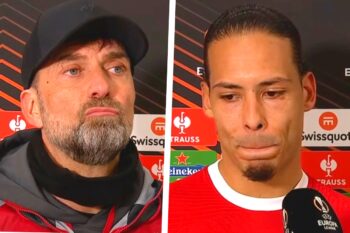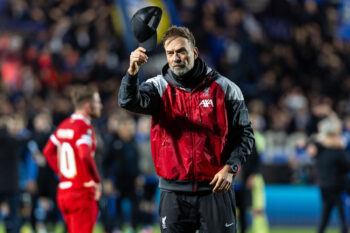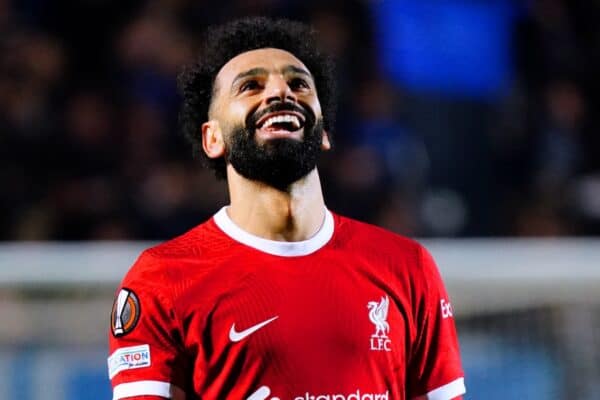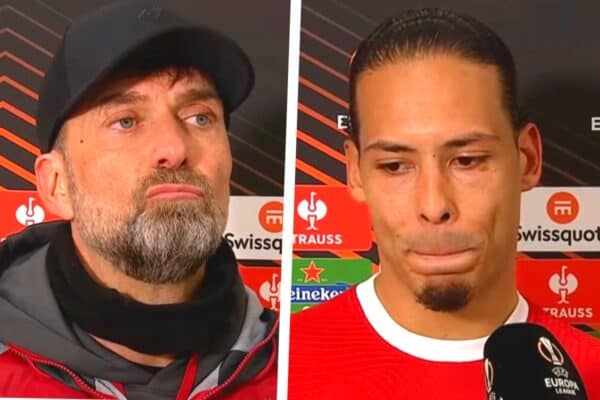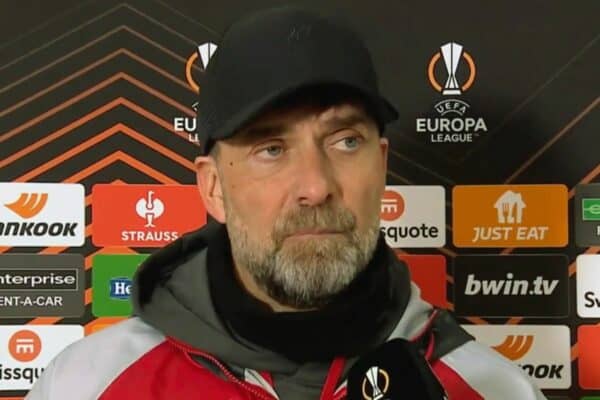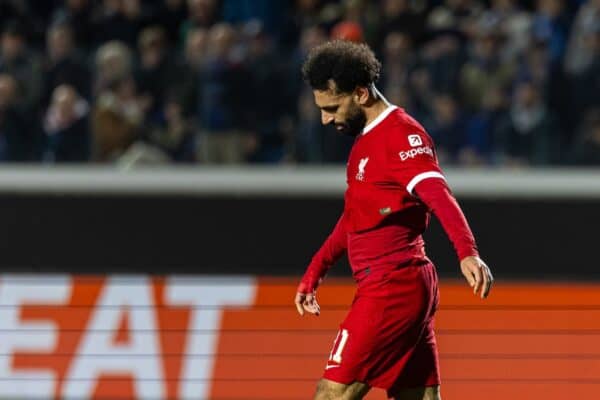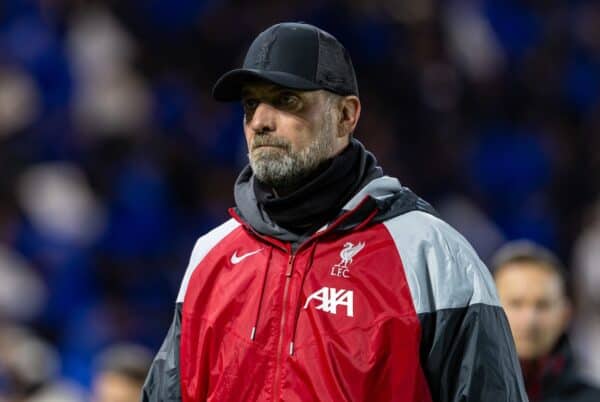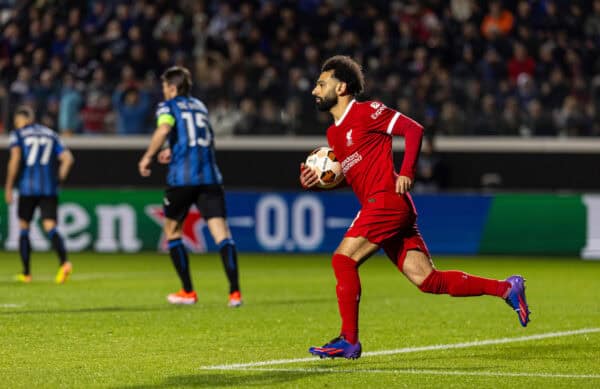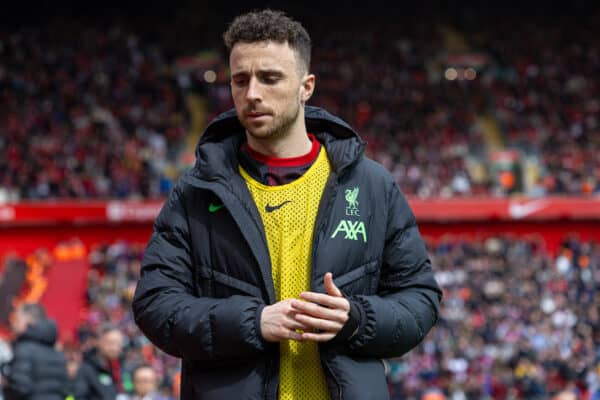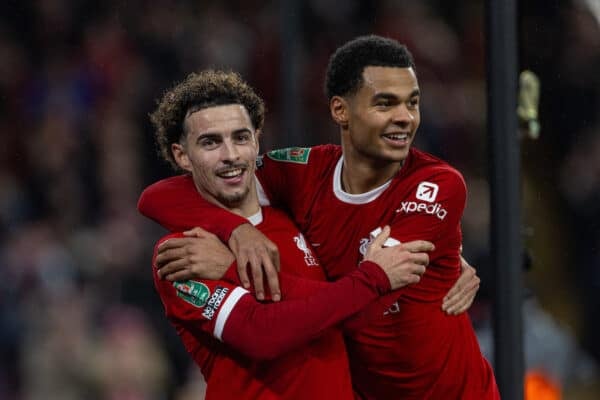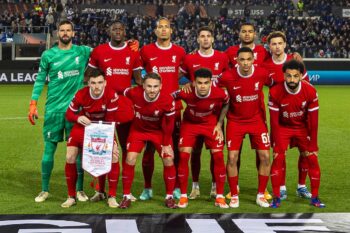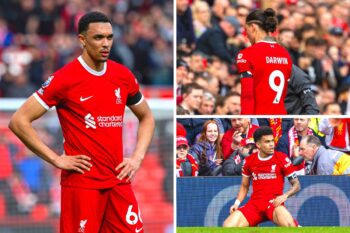IF a club is willing to break its own record for a player transfer, then you would hope that the staff of the club can be sure that the new player will be worth the fee. We’ve seen quite a few players come and go at Liverpool for ever increasing amounts of money, with some working out better than others. The reality of course is that there are just too many variables to consider, and too many unknowns at play. Even the most astute manager can be wrong on occasion, but that is all too often only clear in hindsight. Tony Hateley was a player who had some valuable skills and was identified on more than one occasion as a player worth paying a hefty price for. It was a disappointing surprise and a great shame that his particular talents were overshadowed by the problems he sometimes had fitting in with the already established style of his new team-mates.
Tony Hateley was born in Derby, on Friday the 13th of June, 1941. During his early years, he attended Normanton Junior School, where his obvious talents as a footballer were first recognised. He was tall for his age, and was head and shoulders above the rest of his team-mates, both literally and figuratively. At first, his physical size was put to use as a centre-half, but his other developing talents soon led to a change of position. Tony was also a star on the athletics field, winning the Derbyshire Schools high-jumping championship. The combination of his more than six foot height, and his ability to attack the ball in the air by rising well above everyone around him, led to his being moved to the centre-forward position where he was to spend the rest of his footballing career.
Notts. County took him on as an apprentice at the age of seventeen in June of 1958, and with the help of the coaching staff he worked diligently on improving his heading skills. That was the beginning of a very fruitful spell with The Magpies, where he scored 77 goals in 131 games. That was sufficient to help the club win promotion to the old Third Division in 1960-61. His style of play thrived on long balls and crosses from the wings, and he was becoming known as a master of timing his runs and rising up to head the ball into the net.
First Division Aston Villa came calling in 1963, and Tony was soon wearing the claret and blue of the Villans. In one memorable match he scored four second-half goals to salvage a point against Tottenham after being 5-1 down. His goal scoring prowess not only entertained the fans, but also helped struggling Villa avoid relegation. It’s surely no coincidence that Aston Villa were eventually demoted to the Second Division, at the end of the season after Tony left. If his record of goal scoring at Notts. County was considered excellent over his five seasons at Meadow Lane, then his record over three seasons at Villa Park is even more impressive. For all three campaigns, he was the club’s top goal-scorer, returning 68 goals in 127 games. That’s impressive for any player, and shows the enviable consistency of form (roughly one goal for every two games played over eight seasons) that all managers look for in a striker. One of those managers was the legendary Tommy Docherty, who persuaded Chelsea to pay out a club record £100,000 fee to bring him to Stamford Bridge in October of 1966.
Chelsea needed a replacement for the injured Peter Osgood, who was out with a broken leg. The signing of Tony Hateley to replace him meant that Chelsea had to change their style of play to suit his abilities. While Tony’s aerial strength was undoubtedly the best of his time, Chelsea‘s game was based on quick passing and movement on the ground. Tommy Docherty was never at a loss for words, nor did he suffer fools or untalented players gladly. It was Tony’s lack of technical ability that caused his manager the most concern, with ‘œThe Doc’ once suggesting that ‘œHateley’s passes should be labelled ‘˜To whom it may concern’.’ As for his ball control, that was summed up with, ‘œThis boy can trap a ball further than I could kick it.’
The adaptation to the different style of play was not going well, but at least Chelsea were on a good FA Cup run, which has to have been the highlight of his season. The semi-final was played at his old ground, Villa Park, where he scored the winner against Leeds United. That was not enough for the outspoken Tommy Docherty, and by the end of the season it was clear that his performance was considered less than adequate with a mere 9 goals in 33 appearances. Doc’s final summary of his record signing was, ‘œTony Hateley had it all. The only thing he lacked was ability.’ It was no surprise then that Tony’s final appearance for Chelsea was in the FA Cup final, where he at least earned a runners-up medal in the loss to Tottenham.
It was now Bill Shankly‘s turn to persuade his board that Tony Hateley was worth a club record fee, with Chelsea agreeing to a £96,000 move to Anfield in June of 1967. At this time, Liverpool were at the end of their first season without a major trophy for four years. Shankly was concerned that this barren season should not be repeated, and he was not going to stand idly by if he could see a way of preventing any further decline. His idea was to bring in Hateley as a striker who would consistently score goals and thereby bring success back to the club. It didn’t take long to see what Shankly was thinking when Hateley opened his account by scoring a hat-trick in a 6-0 win against Newcastle in only the third match of the season. That was exactly the start that Shankly had hoped his experiment would bring, and the fact that Roger Hunt also scored a pair in that 6-0 win gave the pair the nickname of the ‘œH Bombers.’
Two days after that demolition of Newcastle, Liverpool travelled to Highbury where a Hateley own-goal handed the points to Arsenal. He quickly atoned for that embarrassment with a goal against West Brom., and then two against his former club – Chelsea. In the last but one match of the season, he picked up another hat-trick in a 6-1 win over Nottingham Forest. Liverpool’s style had to change to be able to provide Tony with the aerial supply he needed to dominate in front of goal, but that was not easy to bring about in a side that had relied on a more subtle build-up approach. The partnership with Roger Hunt was generally successful, with Hunt suddenly finding that defenders were concentrating on Hateley and allowing Roger to pick up balls that the big man would knock down for him. But, as the season progressed, it became clear that the aerial attack was not always as successful as it might have been, with the more skilled defenders being able to contain Hateley and effectively thwart any of his attempts in attack.
Shankly was determined to continue with the pairing for as long as possible, but his right-hand man Bob Paisley was not so sure of the wisdom of this plan. In one game, Paisley was asking for Hateley to be substituted, but Shankly repeatedly ignored him. When a collision between players caused Tony to go down on the ground with a suspected concussion, Paisley called for a stretcher, bound the big man’s legs together, and then signalled for the substitution. Shankly was curious and asked, ‘œHow’s Hateley?’ to which Paisley answered, ‘œOh, he’s fine. I was just making sure that now we’ve got him off you’ll not get him back on again!’
By the end of the season, he had scored a respectable 16 in 38 League appearances, as well as 8 FA Cup goals (including 4 in a replay against Walsall), and 2 more in 5 European Fairs Cup matches. His end of season totals of 27 goals in 52 games is at least as good as any previous campaign, with slightly better than one goal for each two games played. Also, it should be noted that the Hateley – Hunt partnership produced a total of 57 goals that season, in spite of the supposed deficiencies of the tactics that were being employed.
Liverpool finished the 1967-68 season without any silverware, and Shankly decided that his experiment was not successful enough to continue. Tommy Smith summed it up with his comments,
‘œTony was a nice fella and a good player in the right team. However, his arrival changed our style of play. From being a passing team, we suddenly started launching the long ball up to the big man. It is not something you plan. It’s just that a centre-forward who is good in the air becomes a magnet for the long, high ball.’
When the 1968-69 season began, Tony Hateley first of all saw Bobby Graham playing in his place at centre forward, and then after a run of only four appearances in late August, and only producing a single goal, he could see that his time at Liverpool was rapidly coming to an end. Tony’s final appearance for the Reds was away at Leeds United, where he was replaced after 66 minutes by Geoff Strong.
Bill Shankly signed 19 year old Alun Evans from Wolves in September of 1968, and it was obvious that this teenage sensation was to be the sought-after replacement for Tony Hateley. Coventry City then agreed to a £80,000 transfer fee to take Tony to Highfield Road. That proved to be a struggle, with only 4 goals in 17 games, and by the end of the season he was on the move again, this time across town to Birmingham City for one season, followed by a return to his first club Notts. County for two seasons. The return to his first professional club was a resounding success, scoring 32 goals for the club in only 57 games, and leading them to the Fourth Division title.
One more move was in store in 1973, with a brief spell at Oldham Athletic. Tony only made 5 appearances for the Latics, and scored a single goal, before ending his League career. At that point, at the age of thirty three, he might have been ready for retirement but decided to try his luck in the expanding North American Soccer League. Several high profile players were beginning to move over to North America for a season or two to wrap up their careers, and so it made perfect sense. He was signed by the Boston Minutemen, but could only manage three appearances before his knees gave out on the artificial surfaces. Interestingly, his first match was as a substitute in their away match against Vancouver Whitecaps, where Tony took the field against another former Liverpool player ‘“ Willie Stevenson. (Vancouver won the game 1-0, even though they were without the inspirational play of Canadian Superstar Brian Budd).
At the end of his professional career, Tony Hateley had played 434 League games over 16 seasons, and had scored 211 goals with 7 different clubs. For a player with a goal scoring rate of roughly one goal every other game, it’s somewhat surprising that he was never once capped for England.
He had a good professional career, but in the days when Tony Hateley played, players were not made rich through playing. Life after football was often difficult to adapt to, and for Tony it was definitely hard to adjust. He made some effort to break into management, but that was unsuccessful. After that he decided to settle permanently on Merseyside and went into a business venture with a friend, but that was also unsuccessful. That was followed for a short time as a staffer on Everton‘s lottery, and then finally he worked for 14 years as a sales representative for a Lancashire brewery. During his time with the brewery, he also participated in The Celebrity Golf Tour, where groups of three individuals at a time could pay to team up in foursomes with various celebrities, with proceeds going to charity. Tony was a regular at these events, and was presented with a commemorative golf bag for his 25 years of service in support of various worthy causes.
By the middle of the 1990’s, Tony Hateley was more famous as the father of Mark Hateley, who was born in Wallasey in 1961, than as a former professional footballer himself. Mark later became a star striker with Glasgow Rangers, Monaco, and AC Milan among others. That led to an interesting split of family loyalties when Liverpool played AC Milan in two of the last three Champions League finals, with father Tony cheering enthusiastically for Liverpool (once a Red, always a Red!) and young Mark cheering for il Diavolo (the Devil). Tony still visits Anfield occasionally, and when asked about his loyalties before the Istanbul final he said, ‘œI’ll be 100 per cent behind Liverpool. I won’t be out there in Turkey, but I’ll be giving it loads in front of my television set, and there’s only one team I’ll be cheering for – the Reds!’
One of the surprises that arose from researching into the background of Tony Hateley was from an article by sports writer Peter Seddon. (I can recommend his ‘œWorld Cup’s Strangest Moments’ book as a good read.) In that piece, which was one of a series on Derbyshire-born footballers, he offers up this amazing piece of trivia: In the 1980’s an obscure Indie band by the name of The Disco Zombies released a single titled ‘œWhere have you been lately Tony Hateley?’ That question could have been answered a few years later with, ‘œDivorced and unemployed.’ He later remarried and was last known to be living in the Preston area, and was running a stall at Southport’s indoor market selling Christmas decorations.
Tony Hateley was effectively only at Liverpool for one season, but he managed to entertain and delight the crowds in almost every game. He was definitely not the most all around talented player to pass through the halls of Anfield, and perhaps it was a big mistake for Shankly to expect him to fit in with Liverpool’s style. Tony could be considered as one of the first specialists of the game, with his value lying in the one particular talent that he had more than most others. His ability to move into the centre of the box and rise above the rest to head home a well placed cross was a sight to behold, and for that alone he should not be forgotten.

